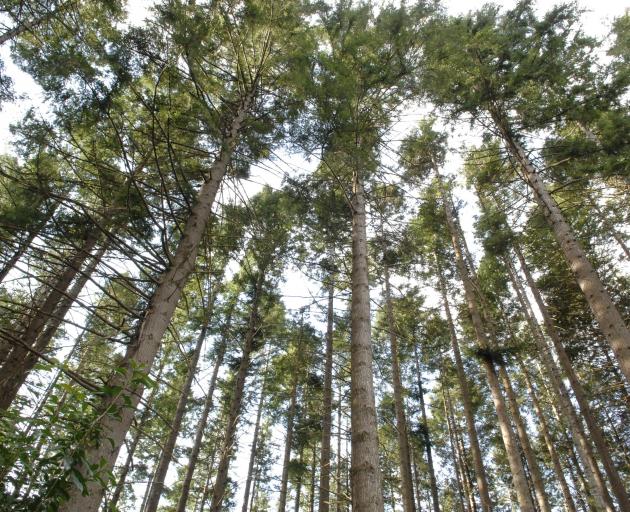
There is a new wave of wilding conifer invasion occurring in Otago and Southland.
This relates to Douglas fir (Dfir) and is largely due to widespread commercial forestry plantings in the early 2000s. Some of these are in or near extensive areas of highly vulnerable hill and high country land.
Dfir can produce large amounts of seed from 15 years of age. Where seed sources are at altitude (up to 900m), prevailing westerly and nor-westerly winds can carry the light seed long distances in extreme weather events. The tussock grass and shrublands receiving the seed readily allow the propagation and growth of Dfir.
Under a worst-case scenario up to 2 million hectares of highly vulnerable hill and high country land under low intensity land use in Otago and Southland could become a continuous exotic conifer forest within decades.
This latest generation of wildings may dwarf the impacts of the earlier legacy trees, contorta pine, Corsican pine and larch, which were planted from the 1950s to the 1980s for soil conservation in eroded high country and for shelter belts, wood lots and amenity trees.
Those have already cost New Zealand well over $150 million for control. The next wave coming from planted Dfir commercial forests may well exceed this unless effective preventive policies and management measures are urgently put in place.
We know that this new invasion is happening because high country farmers next to Dfir forests are seeing spread on to their land and are concerned about loss of grazing.
More alarmingly, both farmers and the Department of Conservation are seeing scattered Dfir seedlings on land sometimes many kilometres from likely seed sources. If continuous forests establish across critical water catchments this will significantly reduce water yield for hydro generators and irrigators.
Similarly, the wildfire risk from extensive, highly-combustible conifer forests would affect not only landholders but also whole rural and urban communities.
At present the highly successful wilding control programmes operating in Otago and Southland are severely restricted by lack of funding.
Today the principal funders of wilding conifer management are central government through taxes, local government through rates and landowners who pay a share of the control costs. Under the Biosecurity Act 1993 those who benefit from control and those who contribute the need for it should pay these costs.
This is required in law but so far it has not captured the full range of potential funders. There are a number of parties who fit these criteria who are not currently contributing but could and should. Another major shortcoming of the control programmes is inadequate regulatory tools.
These are needed to protect the substantial investments made in wilding control so that they are not lost due to reinvasion from other uncontrolled seed sources.
So what will it take to get on top of the next wave of wildings? There is already a well-established partnership of agencies, contractors and stakeholders which has been effectively doing the control for over a decade. What is lacking now is adequate funding to complete programmes as well as more effective regulatory tools.
There is scope to seek additional co-funding from those who contribute to the wilding problem and those who benefit from its solution. Legislation could be strengthened to facilitate access to these sources. Law changes could also be made to strengthen the regulatory regime to protect the gains made as well as those who control wildings from those who don’t.
Government can make these changes. Ultimately managing the next wave of wilding invasion is in the hands of our law-makers.
• Richard Bowman is the former chairman of the Wilding Pine Network.










